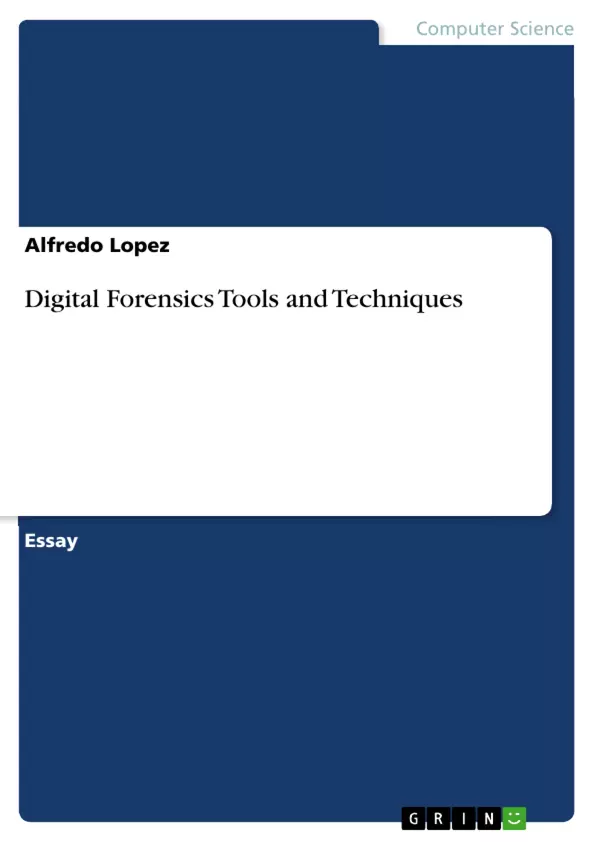Nowadays the use of computers is increasing more and more. This has allowed the development of the internet. In turn, the Internet has brought many benefits, but the internet has also contributed to the rise of cyber-crime. So, with the rise of cybercrime, it has become critical to increase and develop computer systems security.
Each time, the techniques used by cybercriminals are more sophisticated, making it more difficult to protect corporate networks. Because of this, the computer security of these companies has been violated, and it is here at this point when digital analysis forensic is needed to discover cybercriminals.
So, with the rise of cybercrime, digital forensics is increasingly gaining importance in the area of information technology. For this reason, when a crime is done, the crime information is stored digitally. Therefore, it must use appropriate mechanisms for the collection, preservation, protection, analysis and presentation of digital evidence stored in electronic devices. It is here that the need arises for digital forensics.
In this report, I am going to explain what digital forensics is. Also, I will describe some forensic software and hardware and the importance of suitable forensic labs. So, let’s start.
Table of Contents
- 20151.0- Introduction
- 2.0- What is Digital Forensics?
- 22.1-
- 2. 2- Phases of the digital forensics process
- Secure the crime scene:
- Collect the evidence:
- Establish a chain of custody:
- Evidence examination:
- 3.0 Digital Forensic Software Tools
- 3.1- The Sleuth Kit and Autopsy:
- 3.2- ProDiscover Basic:
- 3.3- EnCase Enterprise:
Objectives and Key Themes
This report aims to provide a comprehensive understanding of digital forensics, outlining its importance in the context of cybercrime and its increasing significance within the field of information technology. The report explores key concepts, techniques, and tools used in the practice of digital forensics, including evidence collection, preservation, and analysis.
- The rise of cybercrime and the need for digital forensics
- The phases of the digital forensics process
- The importance of suitable forensic tools and techniques
- The role of forensic labs and ethical considerations
- Examples of commonly used digital forensic software tools
Chapter Summaries
The introductory chapter addresses the increasing prevalence of cybercrime and highlights the crucial role of digital forensics in combating it. It emphasizes the importance of digital evidence collection, preservation, and analysis in investigations involving cybercrime. The chapter lays the groundwork for the subsequent discussion of forensic tools and techniques.
Chapter 2 delves into the core definition and scope of digital forensics, outlining its key objectives and methodologies. This chapter explores the types of digital evidence commonly encountered in investigations, including digital files, logs, and data stored on various electronic devices. It also discusses the crucial phases of the digital forensics process, encompassing crime scene security, evidence collection, chain of custody, and evidence examination.
Chapter 3 focuses on the various digital forensic software tools used for evidence analysis and presentation. The chapter provides detailed descriptions of popular tools such as The Sleuth Kit and Autopsy, ProDiscover Basic, and EnCase Enterprise. It highlights their strengths, limitations, and key features, offering a comprehensive overview of the available tools for digital forensic investigations.
Keywords
Digital forensics, cybercrime, digital evidence, crime scene, chain of custody, forensic tools, The Sleuth Kit, Autopsy, ProDiscover Basic, EnCase Enterprise, evidence analysis, investigation.
- Citation du texte
- Alfredo Lopez (Auteur), 2015, Digital Forensics Tools and Techniques, Munich, GRIN Verlag, https://www.grin.com/document/470310




